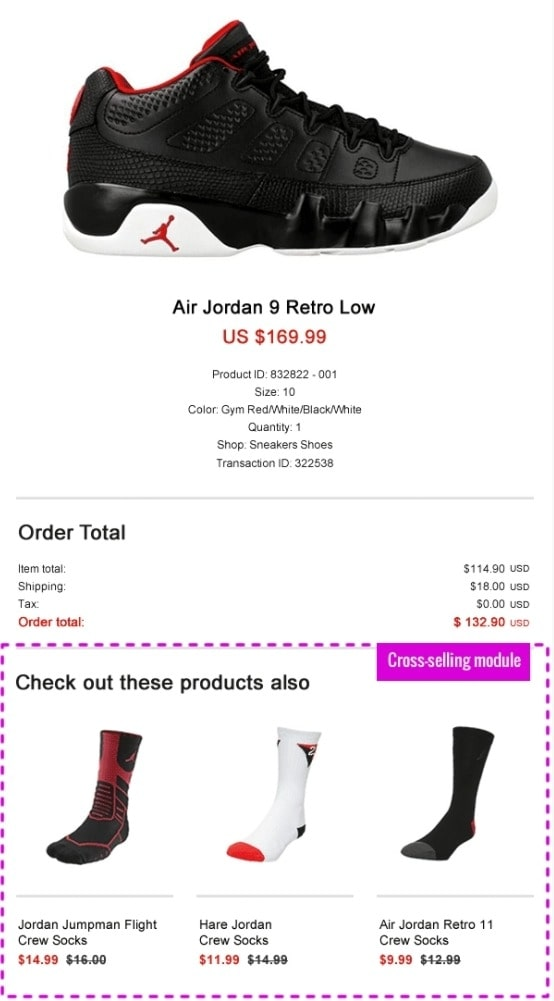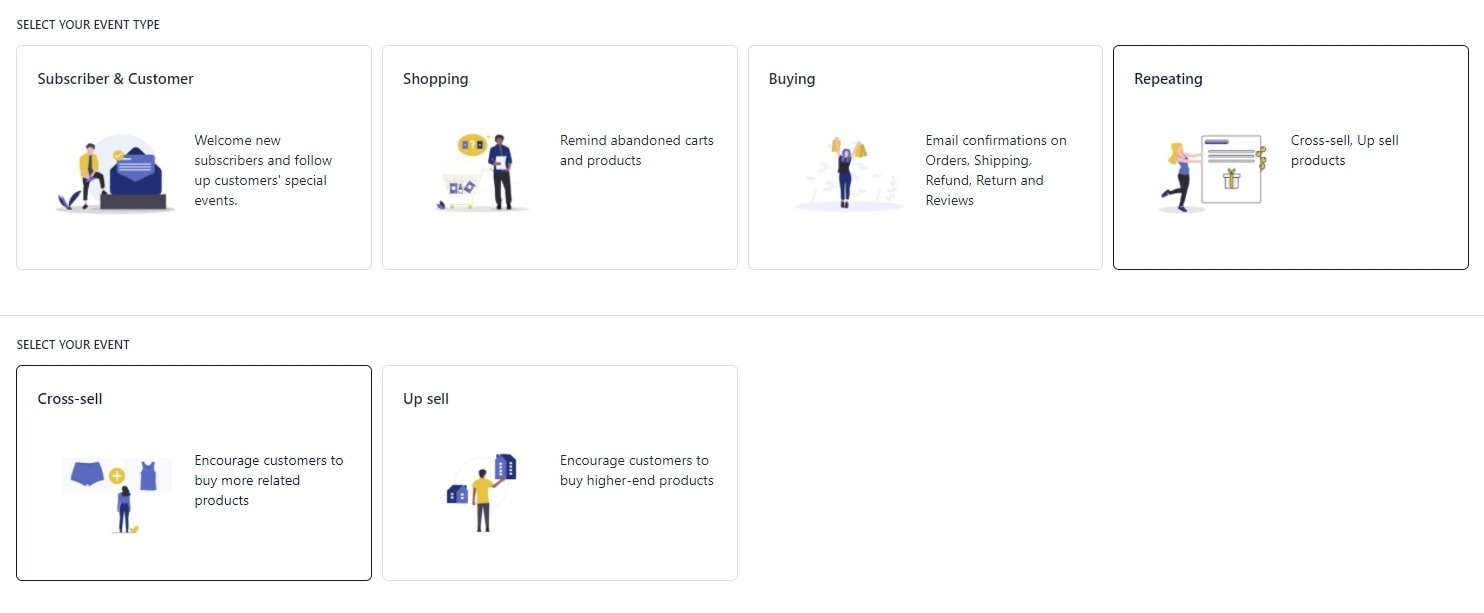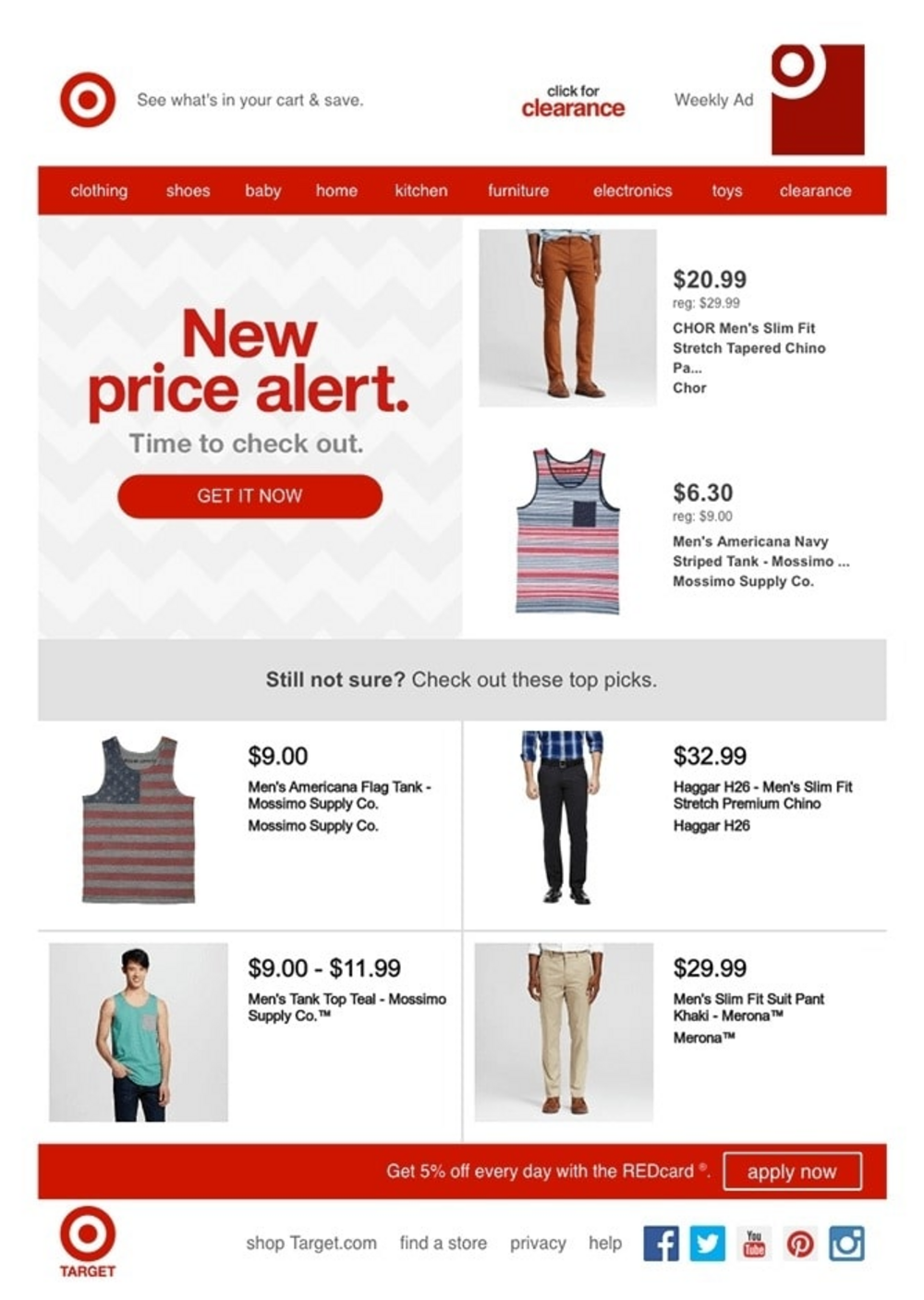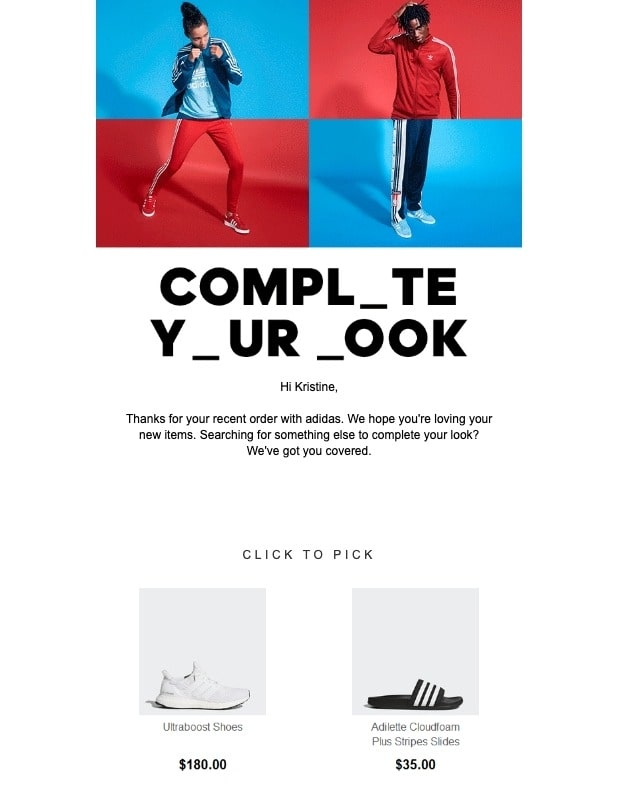What is a cross-sell email?
Cross-sell emails are emails that a business sends to customers to tell them about products that go well with what they have already bought. You can do this in a single email or in a series of emails. The goal of a cross-sell email is to get customers to look at more products and, in the end, buy more.

Why should you use cross-sell emails?
Cross-selling is important for a business because it does two important things:
- It makes customers buy more, on average.
- It lets people know about a store's many other products or services.
Cross-selling and recommending products can bring in up to 35% of Amazon's total revenue, according to Invespcro. Also, customers who click on recommended products are 4.5 times more likely to put that product in their cart.
That's how you get your yacht right there: by convincing customers that they can buy a better deal from your store. They have a better time with your product, and you make more money from them. If you do it right, you will build a relationship with the customer that will allow you to recommend more products to them and they will trust your suggestions. Everyone is happy, and you're good to go.
How can you write irresistible cross-selling emails for your clientele?
Cross-sell emails strategies

1. Identify the opportunities to cross-sell. Let's start by analyzing all of your offerings and outlining the entire consumer experience. Generally speaking, cross-selling is most successful when the product in question is:
- Similarly or in the same way
- Price-wise, it's cheaper than what I really ended up buying.
- Useful and much praised (Make the existing customers even more happy).
Think back on the time you went shopping for a laptop. The suggested accessories (mouse, laptop bag, antiviral software) are all useful, affordable alternatives that won't break the bank and will enhance your laptop experience. Throwing in a bunch of unrelated things and hoping one of them will sell is not cross-selling.
2. Choose the target persona You should decide which clients to focus on once you've selected products with promising cross-selling potential. Learn how to decipher the psychographic segmentation data offered by your sales platforms by studying the client journey and creating buyer personas.
To which groups do you think the cross-sell items will be most useful? The onus is on you to provide an answer to that inquiry. You should also consider who your target demographic typically shops with, as well as what they typically buy together. If you can see that buyers are already making these judgments, selling a complementary product will be much simpler for you.
3. Decide when to cross-sell Now that we know "what" and "who," let's settle on a time. By analyzing your clients' buying habits, you may be able to determine whether or not there is a correlation between the purchase of two different products at a certain moment. Numerous occurrences along the client journey can add time, including:
- When a buyer makes a purchase in a previously unexplored category, it indicates an emerging preference or hobby.
- whenever a buyer writes a glowing review of their purchase.
- After a buyer has gone beyond their regular purchase cycle, you have their attention.
Cross-selling and upselling, as depicted in the preceding map, are part of a sustained campaign to deepen client connections.
4. Determine your messages and positioning The cross-presentation sell's is the final piece of the jigsaw. Find out how these items improve your shopping experience whether you're looking to make a single purchase or if you're planning to make multiples. Explain why you think they would get along well. What kinds of use cases or benefits do you foresee as being particularly appealing to your ideal customers?
Including supporting evidence from real-world sources is another effective technique for making your argument more convincing. Customers will feel more at ease adding the recommended products to their carts if they read positive reviews from previous shoppers. Give customers all the information they need to make a conclusion regarding your worth.
Cross-sell emails subject lines

You shouldn't use cliches like "You may also like..." because they're likely to turn off your clients. Since there are several options and methods, it is crucial that you identify the kind of subject lines that might move buyers.
If you're going to spend time crafting subject lines for your cross-sell email campaigns, you might as well make them the best they can be. Specifically, you should use these recommended procedures for creating topic lines:
- The subject lines should be succinct and to the point.
- Get feedback from coworkers on subject lines before sending out emails.
- Please don't write in title case or all capitals.
- To get seen in a full inbox, you need to make your message unique.
- Exciting or urgent language might motivate readers to take action.
- Don't be reluctant to try out emoji; they might turn out to be helpful if utilized properly.
You can introduce the clients to the supplementary products in many different ways. You might use phrases like "Here's a set you might enjoy" or "You'll adore these complements to [name of product]" to introduce a group of related products. Below, I'll provide you with many more samples and formats, but for now, just try coming up with your own subject lines. Actually, you're the one who knows your target market the best.
Cross-sell emails' best time to send

The best timing to send cross-sell emails depends heavily on the sales funnel's design and the preferences of the intended audience. Cross-selling shortly after a consumer checks out or receives an item may not be as effective if your store's average purchase frequency is long (30 days or more). A low conversion rate can be expected as a result of the low purchase frequency.
Consider sending cross-sell emails to customers just after they finish placing an order, highlighting related products (maybe including an incentive will push them to add the items). Moreover, if your clients do multiple orders every week, you can send additional cross-sell emails in as little as 24 hours after the prior orders.
The frequency with which you send out cross-selling emails is related to both your delivery time and your fee (before or after delivery). If you want to enhance your conversion rate, try cross-selling by giving away shipping for a particular amount spent in the shopping basket. There's a good chance you'll have to try a wide variety of different email formats before you find one that really shines.
Determine how long it takes for customers to reorder similar items. Knowing when your customers typically place their second order will help you better serve them. Using this information, you may make an informed judgment on the best time to send cross-selling emails.
Final Words
Thank you guys for reading my post. Hope these magento information will be useful for your business. If you want to know more about Magento, E-commerce, Digital Marketing, pls give me a like comment and follow.
Source: https://blog.avada.io/resources/how-to-write-cross-sell-emails.html

No comments yet